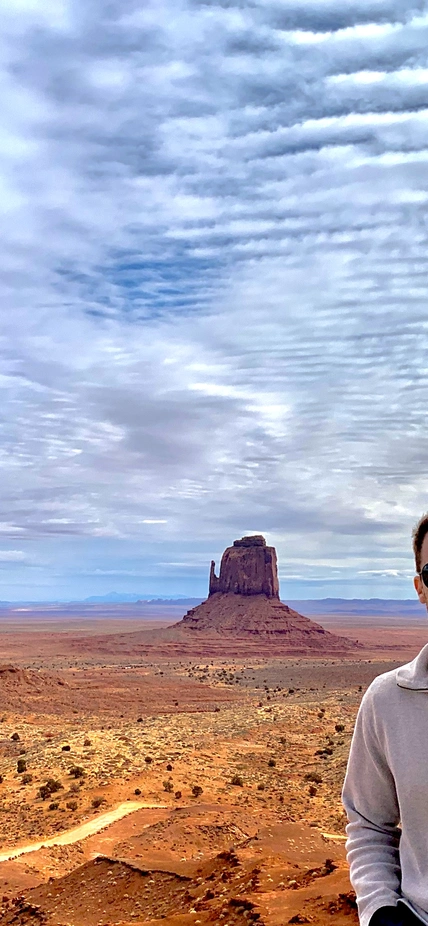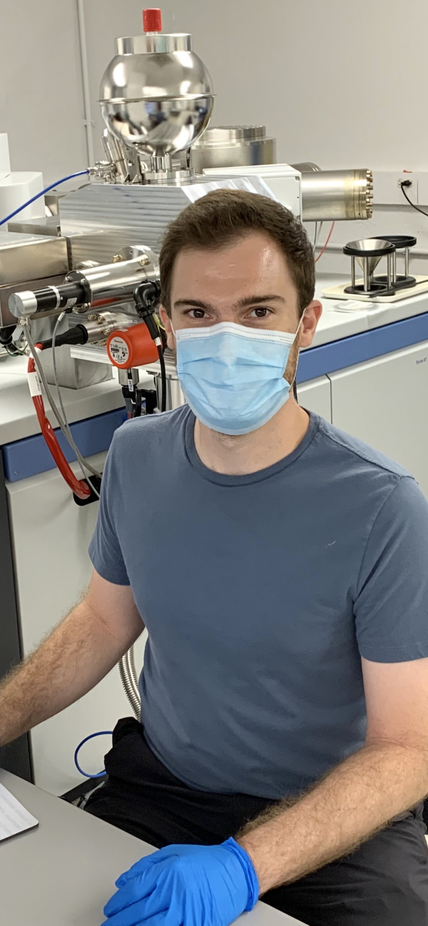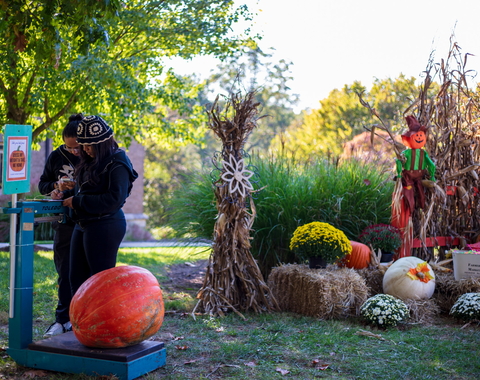Zack Torrano is a planetary scientist and isotope cosmochemist who recently joined the Earth and Planets Laboratory as a Carnegie Postdoctoral Fellow. He studies small time-capsule-like inclusions in meteorites to understand the formation and evolution of our Solar System. In this postdoc spotlight, Torrano explains how his recent research showed that the oldest solids in our Solar System preserved the titanium isotopic variability inherited from the materials from which our Solar System formed. He also discusses how his early love of nature inspired him to want to explore and understand our world and its place in the Universe.
What is your area of research and why is it important?
I am a planetary scientist and cosmochemist. I measure the isotopic compositions of meteorites and use the data I collect to piece together the puzzle of our Solar System’s early history from the collapse of the molecular cloud to the formation of planetary bodies. This work is important because by studying meteorites we can look back in time billions of years to the very beginning of our Solar System and seek answers to questions about how it formed and evolved into the Solar System we know today.
What are the larger implications of your work?
My research aims to identify the nucleosynthetic sources of the elements inherited by our protoplanetary disk, assess the degree of mixing in the early Solar System, and evaluate the timescales of these processes. The results of this research will improve our understanding of the first few million years of our Solar System’s history and will therefore have important implications for the fields of planetary science and astrophysics.
Can you summarize a recent publication or recent project?
In my recent publication, my co-authors and I measured the titanium (Ti) isotopic compositions of a set of calcium-aluminum-rich inclusions (CAIs), which are small inclusions found in certain types of meteorites and are the oldest dated solids in our Solar System at 4.567 billion years old.
This work showed that the region of the early Solar System where CAIs formed was characterized by limited Ti isotopic variability. We concluded that CAIs preserve isotopic signatures of presolar grains that our Solar System inherited, and these results help us better to understand the sources of these isotopic signatures in meteorites, how these signatures evolved through time, and how they can be used as tracers to identify the processes occurring in our early Solar System.
Link to paper: https://www.sciencedirect.com/science/article/pii/S0016703719304752
What inspired you to choose this field of study?
I have enjoyed spending time outdoors hiking and exploring since I was a child, and this interest eventually led me to study geology as an undergraduate student. I was introduced to the study of meteorites during a summer research internship at the Lunar and Planetary Institute and NASA’s Johnson Space Center, and I was immediately hooked by how incredible it was to hold a piece of another Solar System body in my hand and use it to study events that happened billions of years ago.

Cosmochemist Zack Torrano pauses for a photo at Monument Valley.
How has your background influenced your research?
From my first experiences hiking and exploring as a child, I have always been curious about the secrets that nature holds. I have carried this curiosity with me throughout my life and applied it to my research even as I moved from studying Earth to studying other bodies in our Solar System. I have also played musical instruments and sports throughout my life, and I think these activities have cultivated my creativity, attention to detail, determination, and problem-solving skills, all of which have served me well in my approach to doing science.
What else has influenced your thinking as a scientist?
I am very fortunate to have been influenced by advisors who have encouraged me and helped me develop as a scientist. I am also grateful for the many graduate students, postdocs, lab managers, and collaborators I have worked with over the last few years. I think it’s very important as a scientist to consider the ideas of others who have different experiences and knowledge. It is also important to listen to those who have less experience than yourself but who may ask the most insightful questions.
I have found that mentoring and teaching others has often led to me gaining new understanding of my own work as a result of their questions and the ensuing discussions.
When you’re not actively researching, what hobbies or activities do you enjoy in your spare time?
Away from the lab, some of my favorite activities are playing ice hockey, hiking, and visiting National Parks! I’ve been to 26 U.S. National Parks so far (plus two in Canada!) and I’m always looking forward to the next time I can visit one.
Why did you choose Carnegie’s Earth and Planets Laboratory?
Carnegie’s Earth and Planets laboratory has a stellar reputation in the field— the lab and instrumentation facilities, the collection of expertise among the people who work here, and the vibrant postdoc community made this the ideal place for me to continue my career. I am grateful to have received a Carnegie Postdoctoral Fellowship that gave me the opportunity to work here, and I am looking forward to being a member of the EPL community.
If you could meet one of your science heroes, who would it be?
I would like to have met Marie Curie. She has such an inspiring story of perseverance and scientific brilliance, and her groundbreaking work fundamentally changed the fields of physics and chemistry. I admire her not only because she overcame numerous obstacles to become the only person to have received Nobel Prizes in two scientific disciplines, but also for her commitment to applying her scientific expertise to medicine. Her promotion of radiation as a treatment for cancer and her development of portable X-ray vehicles for the treatment of soldiers during World War I saved countless lives.
Do you have any advice for current graduate students?
My advice is to pick a project that you are passionate about and to always remember that setbacks are often the greatest opportunities for learning and discovery. I would also recommend finding activities away from research to help you relax and recharge. Finally, don’t be afraid to ask for help!
Read more about Zack's work on his personal website, zacharytorrano.com. You can follow him on Twitter at @zatorrano.



